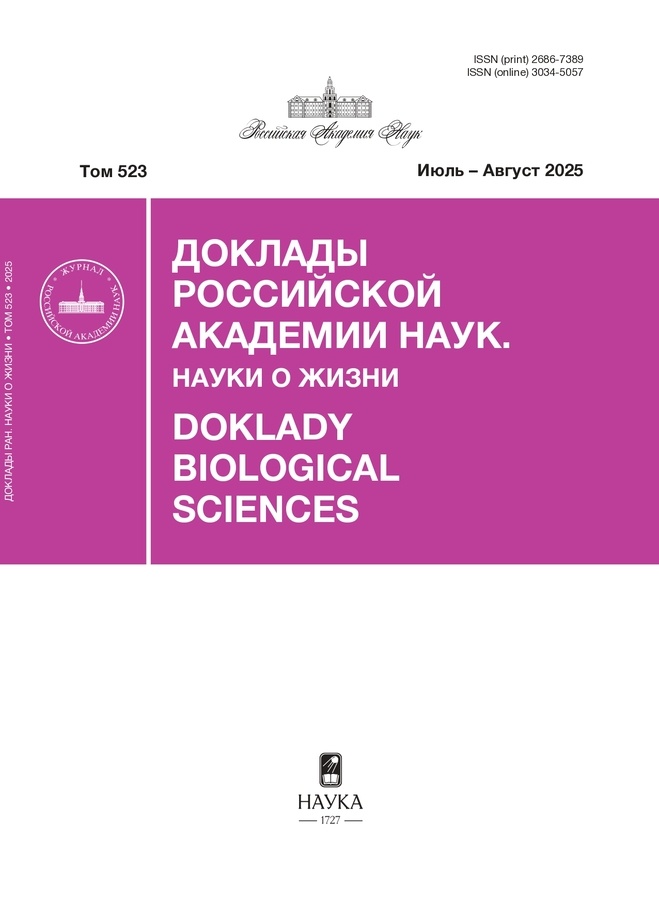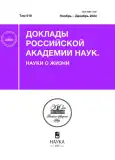Находка яиц нематоды Dioctophyme renale (Goeze, 1782) (Nematoda, Dioctophymidae) на севере Западной Сибири в позднем голоцене
- Авторы: Сивкова Т.Н.1, Косинцев П.А.2, Крапивина В.В.1
-
Учреждения:
- ФГБОУ ВО Пермский государственный аграрно-технологический университет
- Институт экологии растений и животных Уральского отделения РАН
- Выпуск: Том 519, № 1 (2024)
- Страницы: 24-27
- Раздел: Статьи
- URL: https://gynecology.orscience.ru/2686-7389/article/view/651376
- DOI: https://doi.org/10.31857/S2686738924060033
- ID: 651376
Цитировать
Полный текст
Аннотация
Проведен паразитологический анализ 29 образцов копролитов собак, грунта и навоза, полученных из культурного слоя городища Мангазея (66°42'с.ш., 82°16'в.д.), которое датируется 1601–1670-ми годами (конец позднего голоцена). В копролитах собак (Canis familiaris L., 1758) впервые на севере Западной Сибири обнаружены яйца нематоды Dioctophymе renale (Goeze, 1782), поражающей почки плотоядных. В настоящее время этот вид в составе гельминтофауны региона не отмечен. Гигантский свайник мог попасть в регион с собаками, которых привело русское население из европейской России в процессе освоения Сибири, однако, завоз гельминта не привел к формированию нового устойчивого природного очага диоктофимоза.
Ключевые слова
Полный текст
Об авторах
Т. Н. Сивкова
ФГБОУ ВО Пермский государственный аграрно-технологический университет
Email: kpa@ipae.uran.ru
Россия, Пермь
П. А. Косинцев
Институт экологии растений и животных Уральского отделения РАН
Автор, ответственный за переписку.
Email: kpa@ipae.uran.ru
Россия, Екатеринбург
В. В. Крапивина
ФГБОУ ВО Пермский государственный аграрно-технологический университет
Email: kpa@ipae.uran.ru
Россия, Пермь
Список литературы
- Хрусталев А.В., Савинецкий А.Б. Использование гельминтологического анализа ископаемых экскрементов животных для палеоэкологических исследований // Экология. 1990. № 4. С. 83–85.
- Araújo A., Ferreira L.F. Paleo-parasitology and the antiquity of human host-parasite relationships // Mem. Inst. Oswaldo Cruz. 2000. V.5. Suppl. 1. P. 89–93.
- Слепченко С.М. Археопаразитология – новый источник реконструкции миграций древнего населения: возможности, результаты и перспективы // Вестник археологии, антропологии и этнографии. 2021. № 3 (54) С. 147–162.
- Миллер Г.Ф. История Сибири. М.: Восточная литература РАН; 1999. Т. I. 630 с.
- Визгалов Г.П., Пархимович С.Г. Мангазея: новые археологические исследования (материалы 2001–2004 гг.). Екатеринбург–Нефтеюганск: Издательство Магеллан; 2008. 296 с.
- Beltrame M.O., Sardella N.H., Fugassa M.H., Barberena R. A palaeoparasitological analysis of rodent coprolites from the Cueva Huenul 1archaeological sites in Patagonia (Argentina) // Mem. Inst. Oswaldo Cruz. 2012. V. 107. P. 604–608.
- Ferreira V.L., Medeiros F.P., July J.R., Raso T.F. Dioctophyma renale in a dog: Clinical diagnosis and surgical treatment // Veterinary Parasitology. 2010. V. 168. P. 151–155.
- Карманова Е.М. Диоктофимидеи животных и человека и вызываемые ими заболевания // Основы нематодологии. Т. 20. М.: Наука; 1968. 262 с.
- Методы санитарно-паразитологической экспертизы рыбы, моллюсков, ракообразных, земноводных, пресмыкающихся и продуктов их переработки: Методические указания. М.: Федеральный центр гигиены и эпидемиологии Роспотребнадзора; 2015. 44 с.
- Savinetsky A.B., Khrustalev A.V. Paleoparasitological investigations in Mongolia, Middle Asia and Russia // International Journal of Paleopathology. 2013. V. 3. P. 176–181.
- Slepchenko S.M, Bugmyrin S.V., Kozlov A.I., Vershubskaya G.G., Shin D.H. Comparison of Helminth Infection among the Native Populations of the Arctic and Subarctic Areas in Western Siberia Throughout History: Parasitological Researches on Contemporary and the Archaeological Resources // Korean J. Parasitol. 2019. V. 57. N 6. P. 607–612.
- Сивков Г.С., Сергушин А.В. Инвазионные болезни оленегонных собак и диких плотоядных Ямало-Ненецкого автономного округа. Сибирский вестник сельскохозяйственной науки. 2008. № 4 (184). С. 96–99.
- Сивкова Т.Н., Косинцев П.А. Обнаружение яиц токсокар в материале от собак из Наун-Пэ (Полярный Урал) // Современные аспекты патогенеза, клиники, диагностики, лечения и профилактики паразитарных заболеваний: тр. XI Респ. науч.-практ. конф. с междунар. участием. Витебск: ВГМУ, 2019. С. 168–171.
- Буцинский П.Н. Заселение Сибири и быт ее первых насельников. Тюмень: Издательство Ю. Мандрыки; 1999. 328 с.
- Eiras J., Zhu X-Q., Yurlova N., Pedrassani D., Yoshi kawa M., Nawa Y. 2021. Dioctophyma renale (Goeze, 1782) (Nematoda, Dioctophymidae) parasitic in mammals other than humans: A comprehensive review // Parasitology International. V. 81. (Suppl. 1).
- Визгалов Г.П., Кардаш О.В., Косинцев П.А., Лобанова Т.В. Историческая экология населения севера Западной Сибири. Нефтеюганск, Екатеринбург: Издательство АМБ; 2013. 376 с.
- Степанов Л.Н. Влияние строительства газопровода на донную фауну водотоков бассейна р. Мессояхи // Научный вестник Ямало-Ненецкого автономного округа. 2007. Выпуск № 6 (50), часть 1. С. 74–82.
- Pedrassani D. et al. Morphology of eggs of Dioctophyme renale Goeze, 1782 (Nematoda: Dioctophymatidae) and influences of temperature on development of first-stage larvae in the eggs //Revista Brasileira de Parasitologia Veterinária. – 2009. – Т. 18. – С. 15–19.
- Бакулин В.В., Белецкая Н.П., Богданов В.Д. и др. Атлас Ямало-Ненецкого автономного округа. Омск: ФГУП “Омская картографическая фабрика”; 2004. 304 с.
- Slepchenko S.M., Lobanova T.V., Vizgalov G.P., Ivanov S.N., Rakultseva D.S. Archaeoparasitological data and pathoecology of the town of Mangazeya in Western Siberia in the 17th century // Journal of Archaeological Science: Reports. 2021 (35).
Дополнительные файлы









